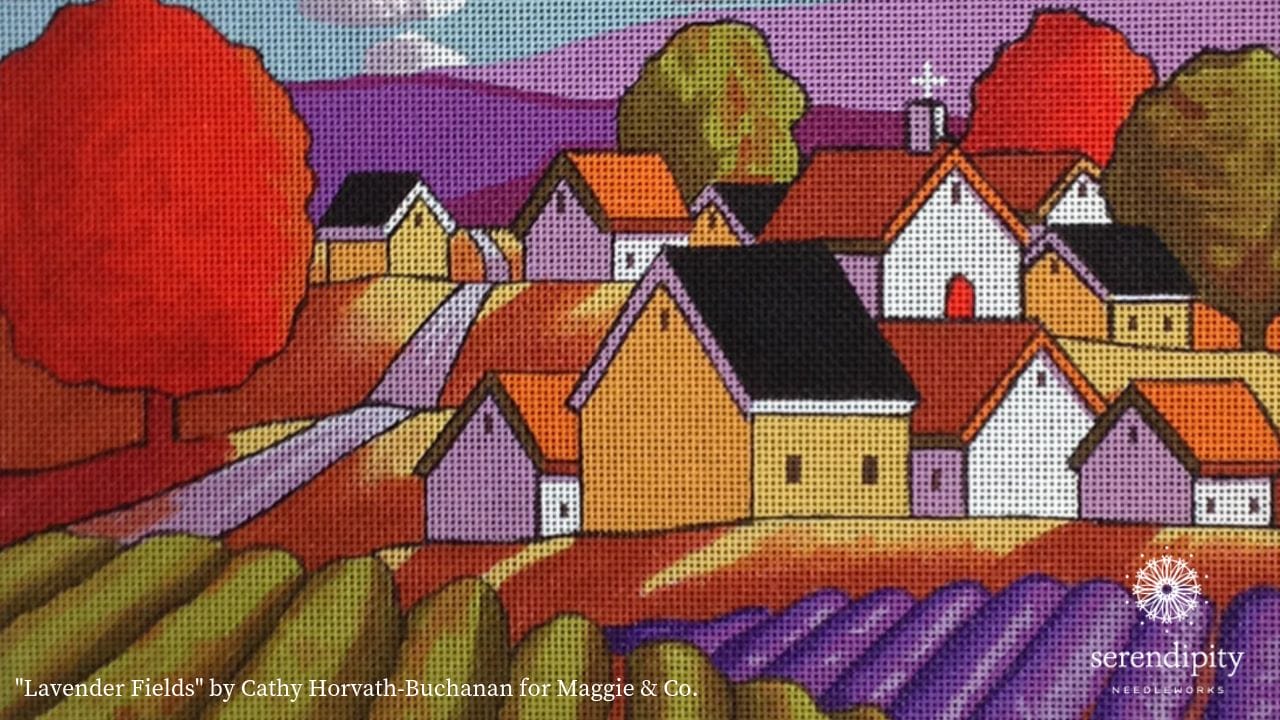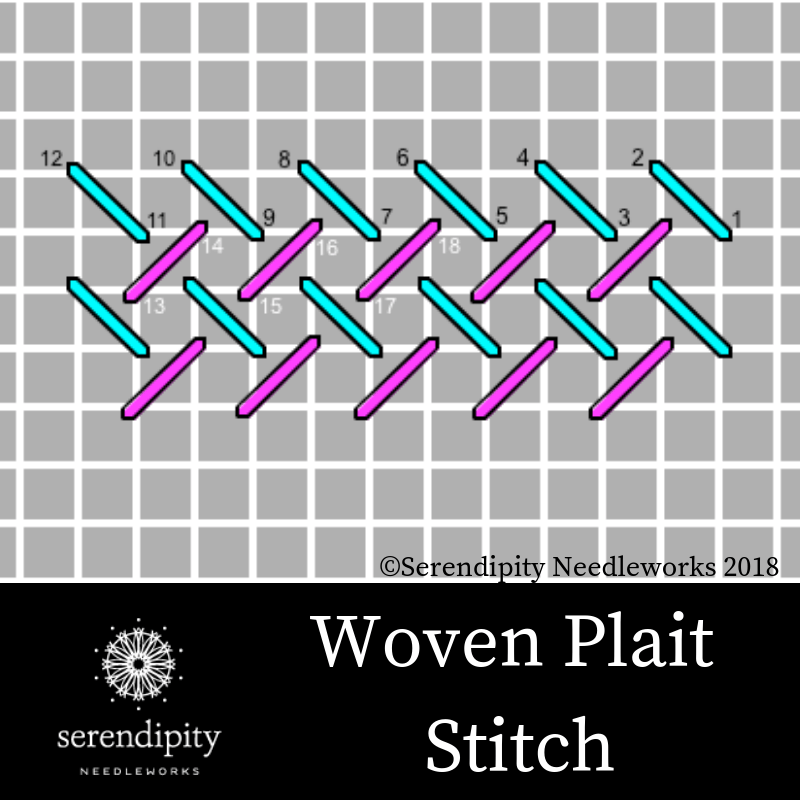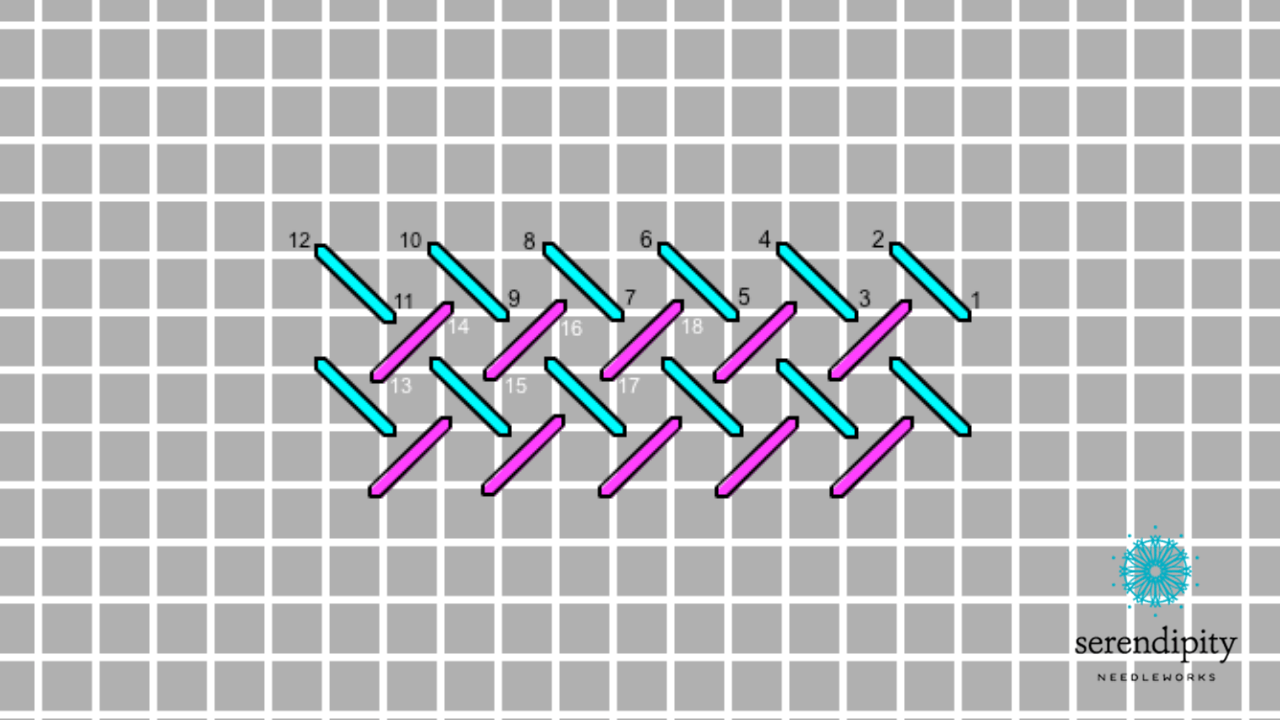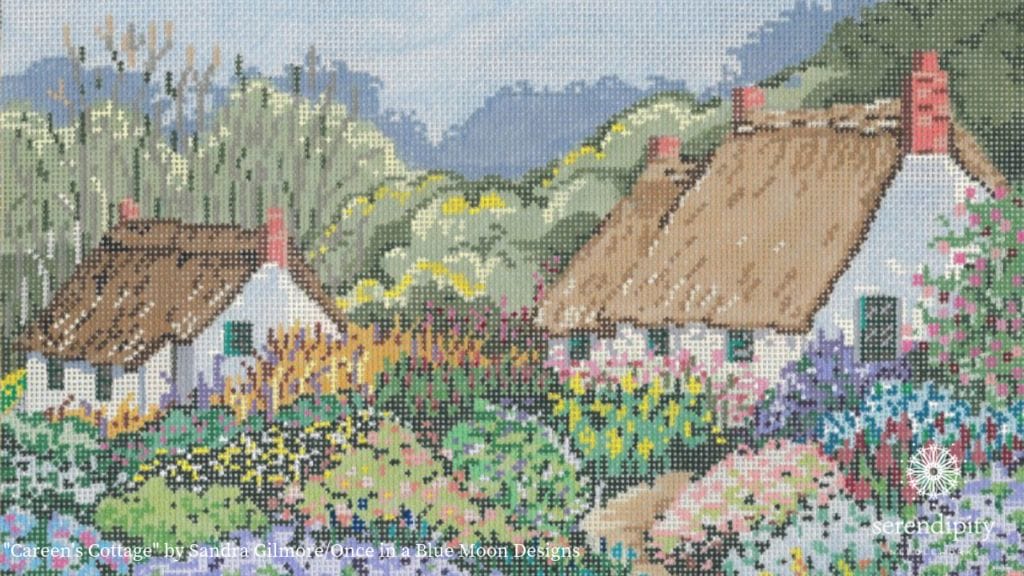Spring has sprung in Alabama…
The trees are sporting bright green leaves, the azaleas are in full bloom, and the birds are singing, so let’s have some more fun with springtime stitches and threads! Whaddya say we take a peek at a stitch that you can use for the trees on your needlepoint canvases, like this one by Maggie and Company. ????

There are oodles of canvas embroidery stitches you can use for trees on your needlepoint projects…
but the woven plait stitch is one of my all-time faves because it allows the artist’s beautiful shading show through – especially when you use a lightweight thread.
The woven plait stitch is super simple, so it’s a terrific option if you’re new to using decorative stitches on your needlepoint canvases. It’s a smallish stitch, so it’ll fit just about anywhere and it’s particularly effective when you use a multi-color thread.
And speaking of multi-color thread, I ❤️Watercolors by The Caron Collection, Threadworx Overdyed Floss, and Weeks Dye Works Perle Cotton for stitching the tops of trees. (There are also some deep rich browns for stitching tree trunks in those thread lines.????)
A single strand of Watercolours on 13 mesh canvas would work quite well. Or you could use 2 strands of Threadworx Overdyed Floss on 18 mesh. (Remember to use a laying tool if you stitch with multiple strands of thread.)
The diagram below is your road map for working the woven plait stitch…

Start at the top right edge of the area you wish to cover and work the first blue horizontal row.
All of the stitches in the woven plait stitch pattern are true diagonal stitches. That means they cover the same number of vertical canvas threads as horizontal canvas threads.
When working the woven plait stitch pattern, each individual stitch lays over two canvas intersections.
What the heck does that mean? Great question… let’s take a closer look at the stitch diagram.

First, your needle should come to the front of the canvas at number one on the stitch diagram.
Then count over to the left two canvas threads (those little white grid lines) and up two canvas threads to get to number two on the stitch diagram. See how the stitch straddles two canvas intersections? Whenever your vertical and horizontal thread count is across the same number of canvas threads (e.g., over 3 and up 3, over 4 and down 4, etc.), you have a true diagonal stitch.
When you get to the end of the first row, turn around and work your way back across the pink (second) row. Notice how the stitches on the second row are offset from the stitches on the first row? That’s what gives the woven plait stitch pattern its texture.
Now, let’s take a peek at some more threads you can use for the woven plait stitch.
You already know that a multi-color thread works very well to add extra depth and dimension to your canvas. And if you want to use a solid color thread, there are oodles and oodles from which to choose.
Some of my favorite solid color threads for stitching trees are…
- Splendor
- DMC Cotton Embroidery Floss
- Impressions
- Planet Earth 6-Ply Silk
- Soie Cristale
- DMC Perle Cotton
If you’d like to watch me demonstrate the woven plait stitch, be sure and tune in to this week’s episode of Serendipi-TV on Thursday evening at 7:00 p.m. CDT. I’ll be broadcasting live from the Serendipity Needleworks Facebook page.
And if you can’t join me live, you can always watch on the Serendipity Needleworks YouTube Channel. (Be sure and subscribe to our YouTube channel so you get the latest updates when new videos are added.)
Well, my friend, that’s all for now…
Until next time, happy stitching!
XOXO!!!❤️

PS: Click here for more stitches and threads you can use for trees on your painted needlepoint canvases.




